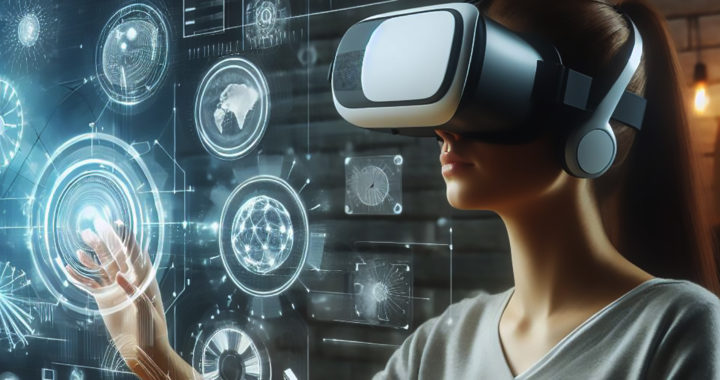Spatial computing takes computing to another level. It provides users with a more natural means of interacting with their computers and also equips these computers with novel functionalities and applications. However, despite its notable characteristics and next-generation applications, it also has several drawbacks and limitations that prevent its wider adaptation in the mainstream market and bar it from replacing traditional human-computer interfacing. This article lists and discusses the pros and cons or advantages and disadvantages of spatial computing.
Pros of Spatial Computing: Advantages and Notable Applications
The defining characteristic of spatial computing is that it provides a user interface not restricted to the computer screen or physical buttons of a device but is perceived as taking place in a real or natural environment. This translates to a more immersive and interactive user experience. Below are the specific advantages of spatial computing and its notable applications:
1. Novel Human-Computer Interactions
It is important to underscore the fact that the concept is a deviation from the practice of teaching people to interact with computers and the digital environments, and instead teaches computers to better understand and interact with people and the natural environment. This results in novel or newer means of human-computer interactions using technologies such as motion sensors, depth sensors and cameras, voice recognition, and image processors, among others.
2. Emergence of New Electronic Devices
Another advantage of spatial computing is that it is ushering in innovative categories or classes of consumer electronic devices. These include virtual reality and mixed reality headsets such as the Apple Vision Pro, augmented reality features of smartphones, smarter home appliances like smart speakers and automation systems, and advanced vehicle features such as autonomous or self-driving capabilities, and hands-free input used in existing device categories.
3. Benefits From Artificial Intelligence
The concept also benefits from developments in artificial intelligence. Some of the most basic devices that have spatial computing features use natural language processing for native speech recognition. This is found in most smartphones, smart speakers, and smartwatches. The more advanced devices such as VR and MR headsets use computer vision. Several existing devices have been equipped to process algorithms and models for contextual awareness.
4. More Immersive Practical Applications
Another notable advantage of spatial computing centers on the development of more immersive and interactive applications that cannot be replicated by two-dimensional and traditional user interfaces. These include AR games for smartphones or motion-controlled games as demonstrated in Nintendo Wii and Kinect for Xbox. There are also more practical applications. These include immersive distanced learning environments and enhanced remote work collaboration.
Cons of Spatial Computing: Disadvantages and Main Limitations
It is true that spatial computing brings in a more immersive user interface and a more interactive user experience. However, considering its characteristics, it is also important to note that not all devices designed with this concept in mind are built the same. The more advanced ones tend to be more expensive. Below are the specific disadvantages of spatial computing:
1. Diverse Platforms or Systems and Devices
The platforms for spatial computing range from simple smart speakers to more advanced VR or MR headsets. These systems or devices also have different features and capabilities that translate to different applications. This can be a disadvantage because it can create confusion as to what spatial computing exactly is. Furthermore, because of the diversity in platforms, it also presents challenges in developing software and marketing specific platform brands or products.
2. Technological Complexities and Limitations
Another disadvantage of spatial computing, at least as of the moment, is that the technology is still new and evolving. More advanced platforms involve the use of more complex technologies and this presents challenges in cost-effective development and implementation. It is also worth noting that VR and MR headsets are still far from comfortable because of their enormous size. The software development route also requires novel UI and UX considerations.
3. User Privacy Issues and Security Concerns
Take note that simpler devices such as smart speakers and smart watches and advanced VR and MR headsets collect vast amounts of user data. These include user preferences, movements or gestures, voice and images, and geolocations, among others. This raises concerns about possible privacy breaches due to mishandled user data. The integration of the real-world environment or the physical world with the digital world also raises issues about novel attack vectors.
4. Possible Legal and Ethical Considerations
Using VR and MR headsets are known for causing eyestrain and motion sickness because of the immersive nature of their user interface. These devices might not be suitable for users who suffer from vertigo, those with poor balance, or patients vulnerable to the risks of tripping. Another one of the main concerns in spatial computing is that it can blur the difference between the real world and the digital world. This can lead to social isolation and a false sense of reality.
Takeaway: Advantages and Disadvantages of Spatial Computing
The aforementioned advantages of spatial computing are transforming the digital experiences of people and are ushering in a new era of computing that is centered on novel and more natural human-computer interactions. Remember that its defining characteristic is that it provides a user interface that is perceived as taking place in a real or natural environment. However, despite its promising applications, the involved technologies are complex. It is also important to note that newer technologies also present newer challenges.
